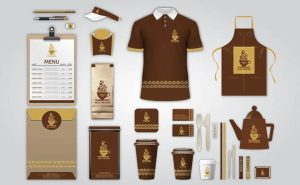Are you interested in graphic design? Do you want to learn more about the terminology used in the field? Understanding graphic design terms is essential for effective communication with designers and for creating your own designs. In this article, we will introduce you to some of the most common graphic design terms and their meanings.
Graphic design is a language of its own, and if you’re not familiar with the terminology, it can be challenging to communicate your ideas effectively. Knowing the correct terms can help you convey your vision clearly and efficiently. In this article, we will cover some of the most important terms used in graphic design, including typography, layout, color theory, branding, and more.
Whether you’re a designer or a client, understanding graphic design terms is crucial for creating successful designs. By familiarizing yourself with the language of graphic design, you can communicate your ideas effectively and work with designers to create designs that meet your needs. So, let’s dive into the world of graphic design and explore some of the most important terms you need to know.
The Power of Graphic Design
You might not realize it, but graphic design has the power to influence your decisions, emotions, and perceptions. From the branding on your favorite products to the layout of your favorite website, graphic design is everywhere. And it’s not just about making things look pretty – it’s about communicating a message.
Graphic design can help businesses stand out in a crowded marketplace. A well-designed logo, for example, can make a company more memorable and recognizable. It can also convey a sense of professionalism and credibility.
But graphic design isn’t just for businesses. It can also be used to make a difference in the world. Non-profit organizations, for example, use graphic design to raise awareness and encourage action. From posters to social media graphics, design can help communicate important messages and inspire change.
In addition to its practical applications, graphic design can also be a form of self-expression. Whether you’re creating a personal brand or designing a piece of art, graphic design allows you to communicate your ideas and personality in a visual way.
Overall, the power of graphic design lies in its ability to communicate and influence. Whether you’re a business owner, non-profit organization, or individual, understanding the principles of graphic design can help you achieve your goals and make an impact.
Essential Graphic Design Terms
If you’re just starting out in the world of graphic design, there are some essential terms you need to know. Here are some of the most important terms to get you started:
Typography
Typography is the art and technique of arranging type to make written language legible, readable, and appealing when displayed. Here are some essential typography terms:
- Serif: A small line or stroke that is added to the end of a letter. Serif fonts are often used in printed materials.
- Sans-serif: A font without serifs. Sans-serif fonts are often used in digital design.
- Kerning: The process of adjusting the spacing between letters.
- Leading: The space between lines of text.
- Tracking: The space between groups of letters.
Color Theory
Color theory is the study of how colors interact with each other. Understanding color theory is essential for creating effective designs. Here are some essential color theory terms:
- Hue: The actual color of an object.
- Saturation: The intensity of a color.
- Value: The lightness or darkness of a color.
- Complementary Colors: Colors that are opposite each other on the color wheel.
- Analogous Colors: Colors that are next to each other on the color wheel.
Layout Terms
Layout terms refer to the way that elements are arranged on a page. Here are some essential layout terms:
- Grid: A system of horizontal and vertical lines that helps to organize content.
- Hierarchy: The arrangement of elements in order of importance.
- Whitespace: The space between elements on a page.
- Alignment: The way that elements are positioned in relation to each other.
- Balance: The way that elements are distributed on a page to create a sense of equilibrium.
Printing Terms
Printing terms refer to the process of printing designs on paper or other materials. Here are some essential printing terms:
- Bleed: The area outside of the design that is printed but then trimmed off.
- Crop Marks: The lines that indicate where a printed piece should be trimmed.
- Resolution: The number of pixels per inch in a digital image.
- CMYK: The four colors used in printing: cyan, magenta, yellow, and black.
- RGB: The three colors used in digital design: red, green, and blue.
Now that you know these essential graphic design terms, you’ll be able to communicate more effectively with other designers and create more effective designs.
Graphic Design Tools
When it comes to graphic design, having the right tools can make all the difference. Here are three popular graphic design software options:
Adobe Creative Suite
Adobe Creative Suite is a comprehensive suite of software programs that includes Photoshop, Illustrator, InDesign, and more. It’s a popular choice among graphic designers due to its versatility and range of capabilities. With Photoshop, you can edit and manipulate images, while Illustrator is ideal for creating vector graphics. InDesign is perfect for creating layouts for print or digital media.
CorelDraw
CorelDraw is another popular graphic design software option. It’s known for its user-friendly interface and powerful tools. With CorelDraw, you can create vector graphics, edit photos, and design layouts for print or digital media. It’s a great option for beginners and professionals alike.
Sketch
Sketch is a vector graphics editor that’s designed specifically for web and app design. It’s known for its intuitive interface and powerful tools. With Sketch, you can create wireframes, prototypes, and high-fidelity designs for web and mobile apps. It’s a popular choice among UX designers and web developers.
In conclusion, having the right graphic design tools is essential for creating high-quality designs. Whether you choose Adobe Creative Suite, CorelDraw, or Sketch, each software option has its own unique features and capabilities. Choose the one that best fits your needs and start creating today!
Graphic Design Styles
When it comes to graphic design, there are many different styles to choose from. Here are three popular styles that you might want to consider for your next project:
Minimalist
Minimalism is all about simplicity and clarity. This style values clean lines, simple shapes, and a limited color palette. Minimalist designs often use negative space to create a sense of balance and harmony.
If you’re interested in creating a minimalist design, here are a few tips to keep in mind:
- Use a limited color palette
- Keep your typography simple and easy to read
- Use negative space to create balance and harmony
- Avoid clutter and unnecessary elements
Retro
Retro designs are all about nostalgia and vintage charm. This style often incorporates elements from the past, such as old-fashioned typography, vintage illustrations, and retro color schemes.
If you’re interested in creating a retro design, here are a few tips to keep in mind:
- Use vintage-inspired typography and illustrations
- Incorporate retro color schemes, such as muted pastels or bold, bright colors
- Use textures and patterns to create a vintage feel
- Avoid using modern design elements that clash with the retro aesthetic
3D
3D designs are all about depth and dimension. This style uses digital tools to create three-dimensional objects and scenes, which can add a sense of realism and depth to your designs.
If you’re interested in creating a 3D design, here are a few tips to keep in mind:
- Use digital tools to create 3D objects and scenes
- Experiment with lighting and shadows to create depth and dimension
- Use textures and materials to add realism to your designs
- Avoid going overboard with the 3D effects, as this can make your design feel cluttered and overwhelming.
Keep in mind that these are just a few of the many different graphic design styles out there. When choosing a style for your project, it’s important to consider your audience, your goals, and the message you want to convey. With a little creativity and experimentation, you can create a design that truly stands out.
Graphic Design Careers
Are you interested in pursuing a career in graphic design? There are various paths you can take within this field. Below are some sub-sections that will give you an idea of what each role entails.
Brand Identity Designer
As a brand identity designer, you will be responsible for creating visual identities for companies or organizations. This includes designing logos, selecting color palettes, choosing typography, and creating brand guidelines. You will need a keen eye for detail and the ability to communicate a brand’s message through visuals.
Illustrator
Illustrators are artists who create visual representations of concepts or ideas. They use their creativity and artistic skills to produce illustrations for books, magazines, advertisements, and more. They may work with traditional media such as pencils and paints or use digital tools like Adobe Illustrator.
UX/UI Designer
User experience (UX) and user interface (UI) designers work together to create digital experiences that are intuitive and enjoyable for users. UX designers focus on the overall user experience, while UI designers focus on the visual aspects of digital interfaces. They work collaboratively to create wireframes, prototypes, and final designs for ux websites, apps, and other digital products.
Whether you choose to specialize in brand identity, illustration, UX/UI design, or another area of graphic design, there are plenty of opportunities to showcase your creativity and make a career out of it.
Future of Graphic Design
Graphic design is constantly evolving, and the future of this field is exciting. As technology advances, new opportunities emerge for designers to create innovative and impactful designs. Here are some trends and predictions for the future of graphic design:
Augmented and Virtual Reality
Augmented and virtual reality technologies are becoming more prevalent, and they offer new possibilities for graphic design. With AR and VR, designers can create immersive experiences that allow users to interact with designs in new ways. This technology can be used for a variety of purposes, from entertainment to education to marketing.
Artificial Intelligence
Artificial intelligence (AI) is already being used in graphic design, and it will continue to play a significant role in the future. AI tools can help designers create designs more efficiently and effectively. For example, AI can be used to generate layouts, color schemes, and typography choices. It can also be used to analyze data and provide insights into user behavior.
Sustainability
As concerns about the environment continue to grow, sustainability will become an increasingly important consideration in graphic design. Designers will need to find ways to create designs that are environmentally friendly and socially responsible. This could involve using recycled materials, reducing waste, and creating designs that promote sustainable practices.
Neural-Inspired Art
AI is also being used to create neural-inspired art, which is a new form of digital art that is generated by algorithms. This type of art is becoming more popular, and it offers new possibilities for graphic design. Neural-inspired art can be used to create unique and visually striking designs that are impossible to create by hand.
Overall, the future of graphic design is bright and full of possibilities. As technology continues to advance, designers will have new tools and techniques at their disposal, allowing them to create designs that are more innovative, impactful, and sustainable than ever before.
Angela Irwin is a branding and design enthusiast with a Bachelor of Fine Arts in Graphic Design from Meadowbrook College. As a writer at Logocreator.io, she shares her expertise on logo design, graphic trends, and effective branding strategies, helping businesses create impactful visual identities.



